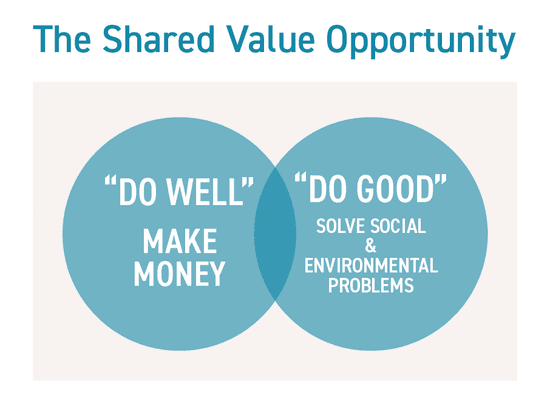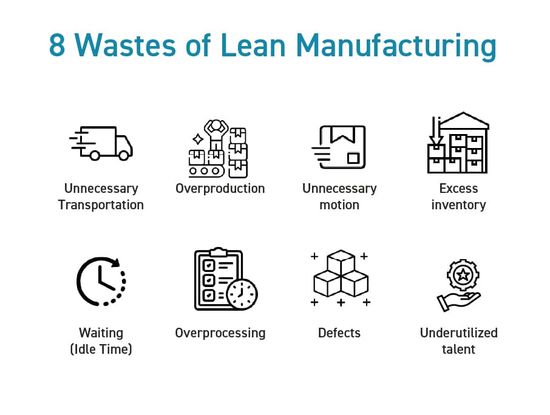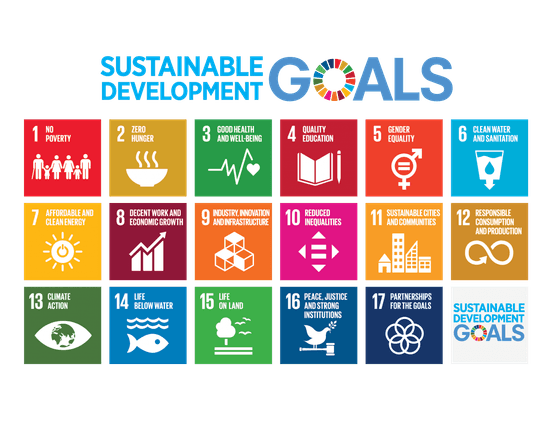
Sustainable Business Strategy and Practices
Sustainability is no longer something you do if you’re “big enough,” “significant enough,” or in a certain industry. Every company in every industry has a role to play in increasing sustainability in business. The public is also becoming more conscious of corporate sustainability. Consumers and employees alike want to understand what businesses are doing to counteract negative environmental outputs in their value chains and how they are contributing positively to society, the environment, employee well-being, and ethical business practices. Not to mention that sustainable business practices have direct cost-saving benefits... but more on that later.

What Is Sustainability?
Sustainability is defined by the United Nations as “meeting the needs of the present without compromising the ability of future generations to meet their own needs.” (Brundtland Commission, 1987). Essentially, sustainability leads companies to take a longer-term perspective on their business outcomes and focus on the lasting impact their current practices will have on their operations now, in the future, as well as the effects these operations will have on others and the environment.
IBM defines sustainability as a “company's strategy and actions to reduce adverse environmental and social impacts resulting from business operations in a particular market. An organisation’s sustainability practices are typically analysed against environmental, social and governance (ESG) metrics.” There are many names and variations for the concept of sustainability, with the aforementioned term ESG (environmental, social, governance) being an important buzzword, as well as CSR (corporate social responsibility), and social impact all being used frequently to describe similar phenomena.
The concept of the “triple bottom line” has also become a popular way to analyse a company’s sustainability profile. The triple bottom line consists of not only economic performance, but also social and environmental performance as well. The “Three P’s” of People, Planet, and Profits make up the three considerations in the triple bottom line. The triple bottom line is concerned not only with your shareholders, but all stakeholders of the company, including employees, consumers, suppliers, the local community, and the physical space it uses.
In this article, we’ve broken down the steps a business can take to start understanding their current sustainability outlook. There are many different things you can do to improve your business’s sustainability. The journey towards sustainability is a marathon, not a sprint. Here are a few strategies and practices you can implement to get started with sustainability so you can have a greater social and environmental impact.
Tip 1: Create a Sustainability Strategy
If you are new to sustainability, we recommend starting off by creating a sustainability strategy that aligns with your corporate strategy see article here. Many companies do not think strategically about their sustainability efforts and start haphazardly throwing money at various nonprofits or implementing sweeping measures in the name of environmentalism. Before doing anything drastic, you should understand which areas in your value chain could improve in sustainable practices, whether that be manufacturing techniques, supplier sourcing, renewable energy, recycling, customer transparency, or sustainable education.
For example, if you are a retail company, your sustainability efforts should be centred around eliminating waste and harm in your clothing supply chain. If you are a food/beverage company, your sustainability efforts could be centred around eliminating waste and giving back to communities through providing food/beverages. This ensures your corporate social impact efforts do not stray from your core business and value proposition. They integrate seamlessly with your corporate strategy and just become good general business practices.
One way you can better understand your value chain activities is through a technique called Value-Stream Mapping. VSM is used to analyse what goes on in your entire value stream and identify which activities are revenue-generating and which are bringing in unnecessary costs. VSM is a helpful tool to leverage when creating your sustainability strategy, as it can inform which value chain activities to focus on improving or maintaining. For example, in the manufacturing industry most cost-saving measures also reduce waste and thus are beneficial to sustainability. This could include reusing pallets, optimising the use of high-energy equipment via scheduling improvements, or reducing the weight of your product, which could lead to lower shipping costs, less packaging used, and a lower carbon-footprint. Generally, to do a thorough Value-Stream Map you must be informed by lots of data, which is much easier to acquire using an ERP system.
Utilising an Enterprise Resource Planning (ERP) system can aid when designing your sustainability strategy. ERP systems store data across all your departments and can automate important business processes such as supply chain logistics, operations, and finances. Including ERP data in your sustainability strategy will give you clarity and help you make informed decisions. Kinabase is a system both SMBs and Enterprise level companies use to store their business data, run their projects, procure goods, and so much more. With its custom data collections and reporting functions, Kinabase is the perfect asset to create your sustainability strategy.
Tip 2: Create a Sustainable Product
Although this is a long-term effort, making your product itself sustainable will make the rest of your sustainability efforts fall into place more naturally. Choose sustainable materials, packaging, suppliers, and designs that can be implemented into your core operations and immediately make a big impact. Again, this tip is focused on what you are already doing in your business to create shareholder value. Sustainability doesn’t have to be something extra that you tack on after your product has been sold. The product itself can have a big impact! Consumers seeking eco-friendly options will be naturally drawn to the brand, while the reduced environmental impact from recycled materials or less frequent replacements translates to long-term cost savings for the company. This creates a positive cycle where the core product fosters both environmental and financial sustainability.
A key way businesses can create more sustainable products is through LEAN manufacturing processes. LEAN manufacturing's core philosophy of eliminating waste extends naturally to sustainability. By tackling the "8 Wastes" of LEAN, businesses can significantly reduce their environmental footprint.
- Reducing product defects (waste #1) through better quality control lowers material waste.
- Minimising transportation (waste #5) and unnecessary motion (waste #6) cuts down on energy use.
- Similarly, optimised inventory management (waste #2) prevents stockpiles that take up space and resources.
- LEAN also tackles overproduction (waste #3) – a key contributor to wasted materials and energy.
- Even underutilised talent (waste #8) can be addressed by empowering employees with problem-solving skills, leading to more sustainable practices overall.
By eliminating these wastes, LEAN helps businesses become more environmentally responsible.

Consider extending your social impact by offering reduced pricing or special packages for nonprofits. This can indirectly contribute to their ability to deliver positive change. By making your product more affordable for these organisations, you're empowering them to streamline their operations and dedicate more resources to their core mission. This translates to a greater social impact for the causes they champion.
Tip 3: Partner with Nonprofits
You can take your Nonprofit engagement one step further by partnering with one in your local community or focus area. This way, you can have greater direct impact and involvement in specific causes you are connected to as a business. In this mutually beneficial arrangement, you gain the nonprofit’s expertise and know-how that will lead to greater impact, and the nonprofit gains your monetary resources to further fund their operations for greater impact.
This arrangement also provides a great opportunity for employee volunteer days or company “give back” initiatives as you have an established partner and know how the money or volunteer time will be spent. It also eliminates the transaction costs and loss of resources from switching nonprofits each time you want to organise a volunteer day.
Tip 4: Focus on Employee Engagement
Your employees are one of your biggest assets when it comes to sustainability. Make them your brand champions! One way companies engage employees in sustainability efforts is through volunteering opportunities for local causes or areas the company is funding. You could provide volunteer time off (VTO) for employees to volunteer for causes personal to their tastes as well, or even make giving back integrated as an option in their pay checks.
Be sure to educate your employees on why sustainability matters. A 2021 HBS article cites businesses that help their employees understand sustainability issues and include them in the process have the most success in creating long term sustainable practices (Stobierski, 2021). This could take place through formal trainings or more informal communications, all-hands meetings, and incentives. Aligning all your business units to the same sustainability strategy can help foster collaboration and transparency among your different departments. It also ensures each business unit can share their perspective on how sustainability applies to their operations, opening chances for further improvement in all parts of the business.

Sustainability is a Smart Business Decision
Good sustainability practices should also be good business practices, because ultimately saving resources, saves money. Many people have the perspective that a focus on environmental and social impacts also leads to increased firm financial performance (Burke and Logsdon, 1996; Chen and Qin, 2019). Specifically, incorporating sustainable practices that correlate with the United Nations Sustainable Development Goals (SDGs) can create credibility around your sustainability efforts and give you a framework to operate around.
The SDGs were published in 2015 with the intention that businesses would contribute to each of the 17 focus areas to improve the most critical of human needs, including poverty, hunger, and health, as well as areas like gender equality, clean energy, responsible consumption, and climate action. There is a place for everyone to contribute. MSCI Research has found that companies with high ESG scores had lower costs of capital, whereas companies with worse ESG scores had high costs of capital, indicating potential financial advantages to sustainable practices (Lodh, 2020). Sustainable business practices can lead to cost reductions and increased operational excellence that ultimately improve competitive advantage and financial performance (Whelan and Fink, 2016).
Although it should not be the reason you engage in sustainability efforts, sustainability can lead to a better brand reputation. By effectively telling your brand’s sustainability story and showcasing your impact through real evidence and data, you can surpass competitors and enjoy more market share. Consumers are drawn to companies that prioritise sustainability – it can boost brand loyalty as well as attract new customers. A recent study found that 81% of consumers felt strongly that businesses should help tackle environmental issues (Nielson, 2018). Specifically in the UK, 40% of Gen Z consumers were more likely to buy from environmentally focused brands (Barclaycard, 2021).
Lastly, sustainability is a smart business decision because it increases employee morale. Employees who feel their company is making a positive impact are more engaged and productive. If they really believe in the organisation’s mission and product/service, they will go to great lengths for the company and will become free advertisements of your sustainability practices. By involving employees in the sustainability strategy and implementation, you can create a culture of impact and giving back at your organisation, one that will hopefully outlast you.
Conclusion
You have the power to create a more sustainable future, even if it is in small ways at first. Look for the easy wins that can make a significant impact in your sustainable business practices. Switching to energy-efficient lighting, reducing reliance on paper by going digital, or implementing a recycling program are all excellent starting points if much of the content of this article is overwhelming at first glance. As you become more mature in your sustainability practices, you can focus more and more on implementing core business changes and strategic corporate sustainability.
Although it is a lot to comprehend and is new terrain for many business owners, sustainability is a key driver of success in today's marketplace, economically and socially. By taking these initial steps, your business can embark on a path towards a more sustainable future, while creating a positive impact and reaping the benefits of a sustainable approach to business. Remember, every action counts, and small changes can lead to a significant difference. Start your journey today and build a thriving business for a sustainable future!
Sources
- Barclays, (2021). “Reporting and disclosures.” https://home.barclays/sustainability/esg-resource-hub/reporting-and-disclosures/
- Burke, L. and Logsdon, J. M. (1996) How corporate social responsibility pays off. Longe Range Planning 29(4), 495–502.
- Chen, J., Liu, J., & Qin, J. (2019). Corporate social responsibility and capacity selection. Transformations in Business & Economics,18(3C (48C)),530–545.
- Lodh, A. (2020). “ESG and the cost of capital.” https://www.msci.com/www/blog-posts/esg-and-the-cost-of-capital/01726513589
- Nielson, (2018). “Global consumers seek companies that care about environmental issues.” https://nielseniq.com/global/en/insights/analysis/2018/global-consumers-seek-companies-that-care-about-environmental-issues/
- United Nations, 1987. Brundtland Commission. http://www.un-documents.net/our-common-future.pdf
- Stobierski, T (2021). “4 Impactful sustainable business practices that can make a difference.” https://online.hbs.edu/blog/post/sustainable-business-practices
- Whelan, T., and Fink, C. (2016). “The comprehensive business case for sustainability.” https://hbr.org/2016/10/the-comprehensive-business-case-for-sustainability
Recent Articles

Sleigh Bells and Stock Levels: How a Single Source of Truth Streamlines
Turn seasonal pressure into a plan for durable, data-led advantage for a smoother transition into a smarter Q1.

Data Without the Headache: AI-Powered Insights for Decision-Makers
How AI Reduces Complexity and Enables Smarter, Faster Decisions .

Customising Your Digital System for Long-Term Growth
Utilising the flexibility of Kinabase to track and evolve with business needs.